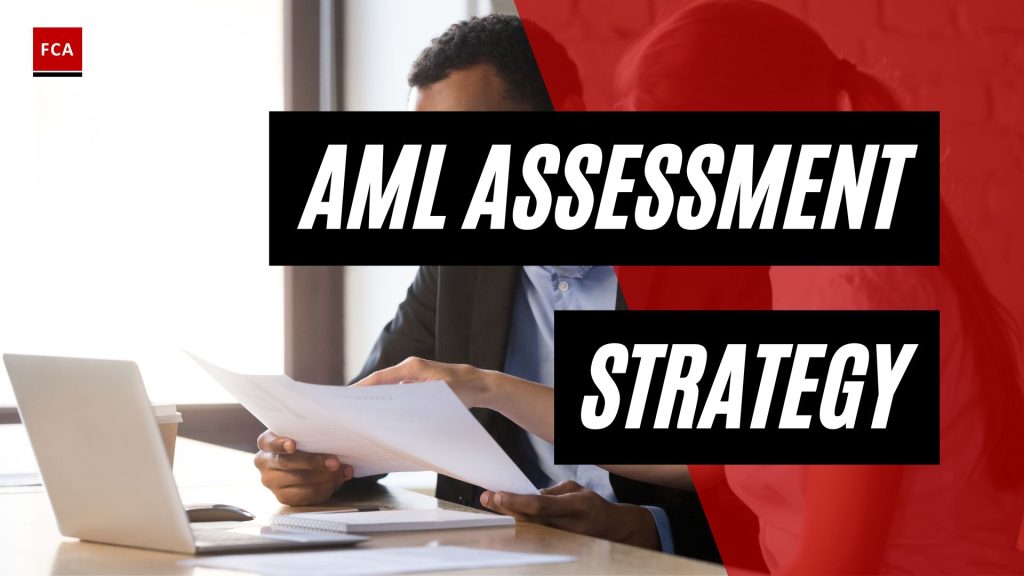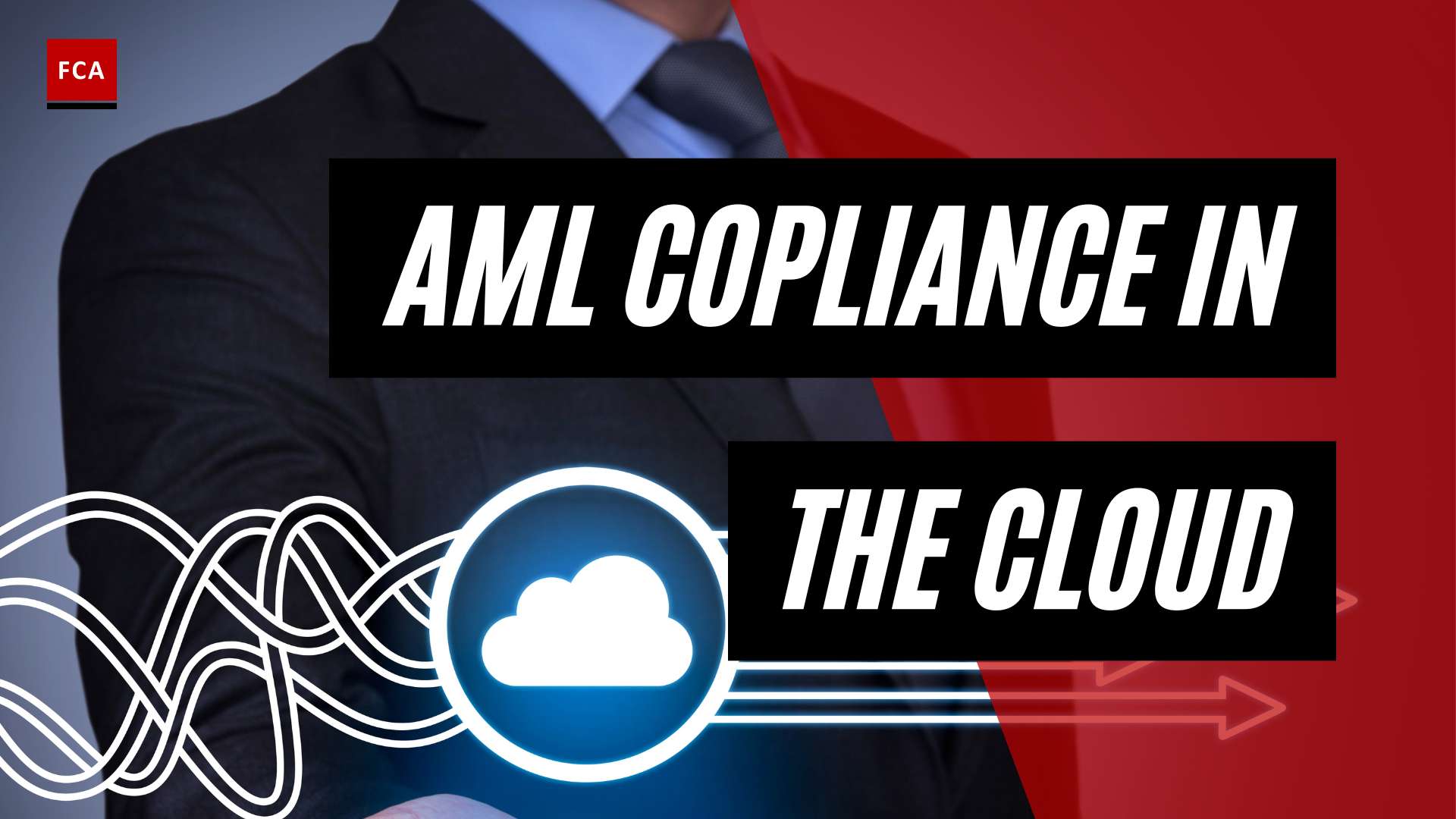Understanding AML Risk Assessment
In the world of financial institutions, combating money laundering and terrorist financing is of paramount importance. Anti-Money Laundering (AML) regulations require financial institutions to implement robust risk assessment procedures to identify, assess, and mitigate the risks associated with money laundering and other illicit activities. This section provides an overview of AML risk assessment, including its definition and significance in the financial industry.
What is AML Risk Assessment?
AML risk assessment is the process by which financial institutions evaluate the potential risks they face in connection with money laundering and terrorist financing. It involves a systematic examination of various factors and indicators that could expose the institution to illicit activities. The objective is to identify and understand the risks associated with the institution’s customers, products, services, and geographic locations.
By conducting an AML risk assessment, financial institutions can develop effective strategies and controls to mitigate the identified risks. This assessment enables them to allocate resources appropriately, implement appropriate policies and procedures, and ensure compliance with relevant AML regulations. A thorough understanding of AML risk assessment is essential for professionals working in compliance, risk management, anti-money laundering, and anti-financial crime roles.
Importance of AML Risk Assessment in Financial Institutions
AML risk assessment plays a critical role in safeguarding the integrity of financial systems and protecting institutions from reputational, legal, and financial risks. Here are a few reasons why AML risk assessment is of utmost importance:
-
Regulatory Compliance: AML risk assessment is a fundamental component of regulatory compliance. Financial institutions are legally obligated to assess and manage the risks associated with money laundering and terrorist financing. By conducting regular risk assessments, institutions can demonstrate their commitment to compliance and avoid potential penalties.
-
Risk-Based Approach: A risk-based approach is the cornerstone of effective AML compliance. AML risk assessments help institutions identify and prioritize the areas of highest risk, allowing them to allocate resources and implement appropriate controls accordingly. This approach ensures that efforts are focused on the areas that pose the greatest threats.
-
Enhanced Due Diligence: AML risk assessments enable financial institutions to conduct enhanced due diligence on higher-risk customers and transactions. By properly assessing the risks associated with specific customers or business relationships, institutions can implement appropriate controls, such as increased monitoring and additional verification measures, to mitigate those risks.
-
Suspicious Activity Detection: A thorough understanding of AML risk assessment assists in the identification of suspicious activities. By analyzing customer behavior, transaction patterns, and other relevant factors, financial institutions can identify unusual or potentially illicit activities. This enables them to file timely and accurate suspicious activity reports as required by AML regulations.
-
Reputation and Trust: Effective AML risk assessment contributes to the overall reputation and trustworthiness of financial institutions. By demonstrating a strong commitment to AML compliance and risk management, institutions build confidence among their clients, regulators, and the general public.
Understanding the concept and significance of AML risk assessment is crucial for professionals involved in AML compliance within financial institutions. It sets the foundation for implementing robust AML programs, ensuring regulatory compliance, and mitigating the risks associated with money laundering and terrorist financing.
Best Practices for AML Risk Assessment
To effectively combat money laundering and other illicit activities, financial institutions must implement robust Anti-Money Laundering (AML) risk assessment practices. By adhering to industry best practices, they can identify and mitigate potential risks. Here are three key best practices for AML risk assessment:
Know Your Customer (KYC) Procedures
Implementing robust Know Your Customer (KYC) procedures is vital in AML risk assessment. KYC procedures involve verifying the identity of customers, assessing their risk profiles, and understanding the nature of their financial activities. By gaining a comprehensive understanding of customers, financial institutions can identify any potential red flags, such as unusual transactions or discrepancies in customer information.
KYC procedures typically include:
- Collecting and verifying customer identification documents
- Conducting enhanced due diligence for high-risk customers, such as politically exposed persons (PEPs) or those from high-risk jurisdictions
- Determining the source of funds and purpose of transactions
- Regularly reviewing customer information and updating records as necessary
By establishing robust KYC procedures, financial institutions can effectively assess the risks associated with their customers and detect any suspicious activity. For more information on suspicious activity reporting, refer to our article on suspicious activity reporting.
Conducting Customer Due Diligence (CDD)
Customer Due Diligence (CDD) is a critical component of AML risk assessment. It involves conducting a thorough investigation of customers to assess their risk levels and potential exposure to money laundering or terrorist financing activities. CDD helps financial institutions identify beneficial owners, understand transaction patterns, and determine the level of risk associated with each customer.
Key steps in conducting CDD include:
- Gathering information about the customer’s business activities, ownership structure, and financial history
- Verifying the beneficial ownership of legal entities, including identifying individuals who ultimately control or benefit from the entity
- Assessing the customer’s risk profile based on factors such as their geographic location, nature of business, and transaction history
- Monitoring and updating customer information on an ongoing basis
By conducting comprehensive CDD, financial institutions can assess the level of risk associated with each customer and tailor their AML measures accordingly. For more information on customer due diligence, refer to our article on customer due diligence.
Ongoing Monitoring and Risk Scoring
Ongoing monitoring and risk scoring are crucial in maintaining effective AML risk assessment practices. Financial institutions should establish systems and processes to continuously monitor customer transactions and activities, promptly detecting any suspicious behavior or deviations from normal patterns.
To facilitate effective ongoing monitoring and risk scoring, financial institutions can utilize:
- Transaction monitoring systems that analyze large volumes of data to identify potentially suspicious activities
- Risk-scoring models that assign risk ratings to customers based on their transactional behavior, risk factors, and other relevant indicators
- Automated alerts and triggers that flag potential suspicious transactions for further investigation
By implementing ongoing monitoring and risk scoring mechanisms, financial institutions can proactively identify and respond to emerging risks and potential money laundering activities. For more information on AML regulations and compliance, refer to our article on AML regulations.
Financial institutions that adhere to these best practices for AML risk assessment can better protect themselves against money laundering risks. By continuously improving their AML compliance programs and staying up to date with evolving regulations, they can effectively combat financial crimes and contribute to a safer financial system.
Key Elements of an Effective AML Risk Assessment
To ensure a robust anti-money laundering (AML) program, financial institutions must focus on key elements that form the foundation of an effective AML risk assessment. By implementing these elements, organizations can identify, assess, mitigate, and control the risks associated with money laundering and terrorist financing.
Risk Identification and Assessment
The first step in conducting an AML risk assessment is to identify and assess the risks specific to the organization. This involves understanding the vulnerabilities and threats that the institution may face. By conducting a thorough risk assessment, financial institutions can identify the areas where money laundering and terrorist financing risks are most prevalent.
During the risk assessment process, different factors should be considered, such as the nature of the institution’s customers, products, services, and geographic locations. By evaluating these factors, organizations can determine the level of inherent risk associated with each area and prioritize their efforts accordingly. It’s important to note that the risk assessment should be an ongoing process, regularly reviewed and updated to reflect changes in the organization’s risk profile and regulatory requirements.
Risk Mitigation and Control Measures
Once the risks have been identified and assessed, financial institutions should implement appropriate risk mitigation and control measures. These measures are designed to reduce the likelihood and impact of money laundering and terrorist financing activities. Some common risk mitigation measures include:
-
Customer Due Diligence (CDD): Conducting thorough customer due diligence procedures helps in understanding the customer’s identity, source of funds, and purpose of the business relationship. This enables the institution to assess the level of risk associated with a particular customer and implement appropriate controls.
-
Enhanced Due Diligence (EDD): For higher-risk customers or transactions, enhanced due diligence measures should be applied. This may involve gathering additional information, conducting periodic reviews, and performing ongoing monitoring to ensure compliance with AML regulations.
-
Transaction Monitoring: Implementing robust transaction monitoring systems enables financial institutions to identify and report suspicious activities in a timely manner. These systems use sophisticated algorithms to detect unusual patterns or transactions that may indicate potential money laundering or terrorist financing.
Documentation and Reporting
An essential aspect of AML risk assessment is maintaining proper documentation and reporting. Financial institutions should document the methodology used to assess risks, the results obtained, and the rationale behind the risk mitigation measures implemented. This documentation serves as evidence of the institution’s efforts to comply with AML regulations and can be important in demonstrating compliance during regulatory examinations.
Additionally, financial institutions are required to submit suspicious activity reports (SARs) to the appropriate regulatory authorities when there are reasonable grounds to suspect money laundering or terrorist financing. These reports provide crucial information to law enforcement agencies and contribute to the overall fight against financial crime. For more information on suspicious activity reporting, refer to our article on suspicious activity reporting.
By incorporating these key elements into their AML risk assessment practices, financial institutions can enhance their ability to detect and prevent illicit activities. It’s important to note that compliance with AML regulations is an ongoing process, and institutions should regularly review their risk assessment practices to ensure they remain effective and aligned with evolving regulatory requirements.
Implementing AML Risk Assessment Tools and Technology
To effectively manage and mitigate the risks associated with money laundering and financial crimes, financial institutions need to leverage advanced tools and technology for AML risk assessment. Implementing these tools can enhance the efficiency and accuracy of the risk assessment process. Here are three key tools and technologies used in AML risk assessment:
Automated Transaction Monitoring Systems
Automated transaction monitoring systems play a crucial role in identifying potentially suspicious activities within financial institutions. These systems are designed to analyze large volumes of transactional data in real-time, flagging any transactions that deviate from expected patterns or exhibit high-risk indicators.
By utilizing predefined rules and algorithms, these systems can spot anomalies, such as unusual transaction amounts, frequent large cash deposits, or transactions involving high-risk jurisdictions. They enable compliance teams to promptly investigate and report suspicious activities, ensuring regulatory compliance and effective risk management. To learn more about suspicious activity reporting, refer to our article on suspicious activity reporting.
Data Analytics and Artificial Intelligence
Data analytics and artificial intelligence (AI) technologies have revolutionized the field of AML risk assessment. These tools enable financial institutions to analyze vast amounts of structured and unstructured data to identify patterns, trends, and anomalies that may indicate money laundering or other illicit activities.
By leveraging AI algorithms and machine learning techniques, these technologies can continuously enhance their risk assessment capabilities. They can adapt to evolving risks and detect previously unknown patterns of suspicious behavior. The integration of data analytics and AI enables more efficient and accurate identification of potential risks, helping institutions stay ahead of money laundering threats.
Regulatory Compliance Software
Regulatory compliance software is a vital component of an effective AML risk assessment program. This software provides financial institutions with a centralized platform to manage and monitor their AML compliance activities. It helps streamline processes, automate workflows, and ensure adherence to regulatory requirements.
Some key features of regulatory compliance software include customer due diligence (CDD) workflows, beneficial ownership identification, risk scoring, and monitoring of customer accounts. These tools enable institutions to efficiently conduct customer due diligence, assess and mitigate risks, and maintain detailed documentation for audit and reporting purposes. By implementing robust compliance software, financial institutions can strengthen their AML compliance program and meet AML regulations effectively.
By incorporating automated transaction monitoring systems, data analytics and AI, and regulatory compliance software, financial institutions can enhance their AML risk assessment processes. These tools enable them to identify and mitigate risks more effectively, ensuring compliance with regulatory obligations. However, it’s important to note that technology should be complemented by skilled compliance professionals to interpret and act upon the insights provided. This combination of technology and expertise is crucial in the fight against money laundering and financial crimes.
Staying Ahead in AML Risk Assessment
To effectively combat the ever-evolving landscape of money laundering and financial crime, staying ahead in AML risk assessment is crucial. By implementing proactive measures, financial institutions can enhance their ability to detect and prevent illicit activities. Here are some best practices to consider:
Regular Training and Education
Regular training and education are essential for professionals involved in AML risk assessment. It is crucial to stay updated on the latest industry trends, regulatory requirements, and emerging typologies of money laundering. By providing relevant training to employees, organizations can ensure a high level of awareness and competence in identifying suspicious activities.
Training sessions should cover topics such as suspicious activity reporting, anti-money laundering compliance, customer due diligence, and other key aspects of AML risk assessment. These sessions can be conducted in-person or through online platforms, allowing for flexibility and accessibility.
Keeping Up with Regulatory Changes
AML regulations are constantly evolving to keep up with new money laundering techniques and emerging risks. It is crucial for organizations to stay informed about regulatory changes and updates that impact AML risk assessment. This can be achieved by closely monitoring regulatory authorities’ communications, participating in industry forums, and engaging with compliance networks.
Maintaining an up-to-date understanding of AML regulations helps organizations adapt their risk assessment processes and ensure compliance with the latest requirements. By proactively incorporating regulatory changes into their AML compliance program, financial institutions can effectively manage risk and maintain a robust control framework.
Collaboration and Information Sharing
Collaboration and information sharing between financial institutions, regulatory bodies, and law enforcement agencies play a vital role in staying ahead in AML risk assessment. Establishing strong partnerships and networks allows for the exchange of best practices, insights, and intelligence related to money laundering and financial crime.
Financial institutions can actively engage in public-private partnerships, industry associations, and information-sharing initiatives to enhance their AML risk assessment capabilities. By leveraging collective knowledge and experiences, organizations can strengthen their defenses against money laundering and foster a more resilient financial system.
By prioritizing regular training and education, keeping up with regulatory changes, and fostering collaboration and information sharing, financial institutions can stay ahead in AML risk assessment. These best practices, combined with robust AML compliance programs, beneficial ownership regulations, and the appointment of dedicated AML compliance officers, contribute to a comprehensive and effective approach to combating money laundering and protecting the integrity of the financial system.








